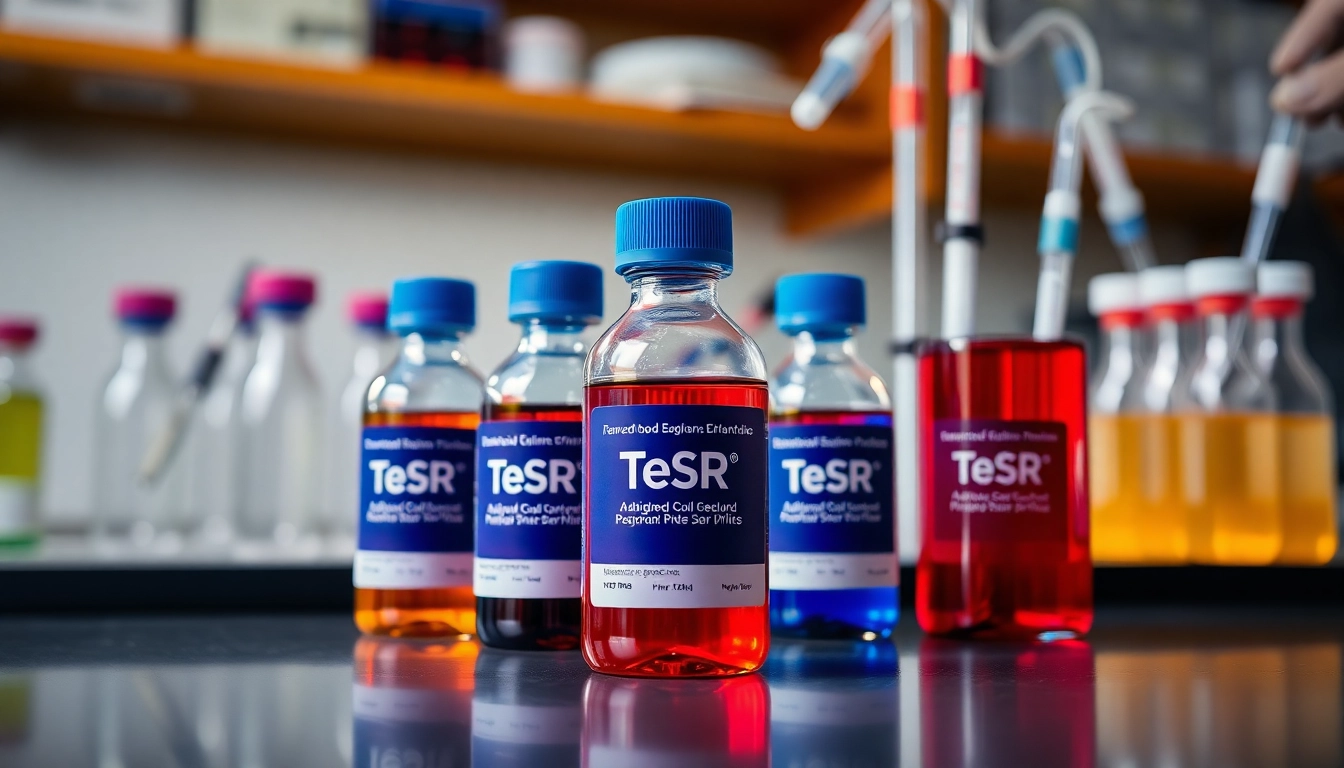Introduction to TeSR™ Feeder-Free Media
The importance of all check in stem cell culture cannot be understated, especially when it comes to using optimized media for the maintenance and differentiation of pluripotent stem cells. The TeSR™ family of feeder-free media has revolutionized the way researchers conduct experiments involving human embryonic stem (ES) cells and induced pluripotent stem (iPS) cells. These media address specific needs in stem cell culture such as minimizing variability in growth conditions while ensuring high rates of viability and pluripotency.
What is TeSR™ Media?
TeSR™ Media consists of a series of formulations designed to sustain human pluripotent stem cells in a defined, feeder-free environment. Initially pioneered by Dr. James Thomson, TeSR™ has undergone numerous iterations, each improving on essential features like nutritional content, pH stability, and ease of use. The most recognized formulations include mTeSR™, TeSR™-E8™, and mTeSR™ Plus, which vary in complexity and specific applications.
Importance of Feeder-Free Conditions
Feeder-free conditions allow for the maintenance of stem cells without the prior use of animal-derived substrates and feeder layers. This not only simplifies the culture process but also reduces the risk of contamination and variability associated with feeder cell cultures. In addition, feeder-free systems can enhance the reproducibility of experiments, making it easier for researchers to compare results across studies.
Overview of Main TeSR™ Products
The main products within the TeSR™ media family include:
- mTeSR™ Plus: Offers stabilized components for enhanced buffering capacity and is cGMP-manufactured.
- TeSR™-E8™: A low-protein formulation that simplifies maintenance while maintaining pluripotency.
- TeSR™-AOF: Ensures that all components are free from animal origin materials.
- mFreSR™: Specializes in the cryopreservation of stem cells.
- ReproTeSR™: A medium designed specifically for reprogramming and enhancing the efficiency of iPS cell generation.
Applications of TeSR™ Media in Stem Cell Research
Utilization in Maintenance and Expansion
TeSR™ media are essential for maintaining self-renewing, pluripotent stem cell cultures. Research has shown that using mTeSR™ Plus results in higher cell viability and culture efficiency compared to traditional feeder layers. This is crucial for large-scale applications where conservation of cell lines and uniformity in growth conditions are paramount.
Applications in Differentiation and Reprogramming
The differentiation capabilities of TeSR™ media enable scientists to direct pluripotent stem cells towards specific lineages, thereby accelerating research in regenerative medicine and disease modeling. Products like TeSR™-E5 and TeSR™-E6 are tailored for differentiating to specific cell types, making them indispensable for researchers focusing on hematopoietic cells, neural cells, and even cardiomyocytes.
Impact on Cryopreservation Techniques
Effective cryopreservation remains a critical component in stem cell research. TeSR™ offers specialized media such as mFreSR™ and FreSR™-S for cell freezing, ensuring adequate recovery rates post-thaw. These formulations have been optimized to balance the osmotic and energetic demands placed on stem cells during the cryopreservation process, ultimately aiding in successful long-term storage of valuable cell lines.
Advantages of Using TeSR™ Media
Consistency and Reproducibility
The rigorous quality control measures inherent in TeSR™ media production help ensure consistent batch-to-batch performance. Researchers benefit from this reliability, as it significantly reduces experimental variability and enhances the reproducibility of results across different laboratories.
Enhanced Cell Growth and Viability
Data indicates that stem cells cultured in TeSR™ media demonstrate higher rates of proliferation and viability compared to traditional media. This is partly due to optimized nutrient composition and the absence of undefined biological components, which can lead to inconsistent results.
Regulatory Compliance and Safety
Safety in cell culture is a top priority for researchers. With products like TeSR™-AOF that are guaranteed free of animal and human material, researchers can confidently use these media in clinical applications and regulatory environments, ensuring compliance with cGMP standards.
Comparative Analysis of TeSR™ Media Variants
Key Features of mTeSR™ Plus
mTeSR™ Plus is designed for optimal maintenance of pluripotent stem cells, offering enhanced buffering to prevent medium acidification. This unique formulation allows for longer intervals between media changes and minimizes the risk of compromising cell quality, making it an excellent choice for clinical applications.
Differences Between TeSR™-E8™ and TeSR™-AOF
While both TeSR™-E8™ and TeSR™-AOF are designed to support pluripotent stem cells, they cater to different research needs. TeSR™-E8™ focuses on low-protein maintenance, ideal for academic research, whereas TeSR™-AOF ensures that all components are of animal-free origin, suitable for laboratories concerned with viral safety and regulatory compliance.
Choosing the Right Medium for Your Research Needs
When selecting a TeSR™ product, researchers should consider various factors, including the type of stem cells being cultured, the desired applications (maintenance vs. differentiation), and any regulatory concerns. Utilizing the Interactive Product Finder provided by STEMCELL Technologies can greatly streamline this selection process.
Future Trends in Pluripotent Stem Cell Culture
Innovations in Media Formulation
As stem cell research evolves, so does the demand for media that meet increasingly complex requirements. Innovations such as customizable formulations that integrate growth factors and improved cytokine profiles are on the horizon, enabling more tailored solutions for various research applications.
Integration of Technology in Cell Culture
Technological advancements, such as automated cell culture systems and AI-driven predictive modeling for cell differentiation, are likely to play a significant role in the future of stem cell research. These technologies will complement TeSR™ media formulations to enhance scalability, efficiency, and reproducibility of stem cell cultures.
Expert Insights and Predictions
Key opinion leaders in the field emphasize the importance of evolving media formulations that can support next-generation therapies. As the landscape of regenerative medicine shifts toward more personalized treatments, the need for versatile and robust culture media like those in the TeSR™ family will become more pronounced. Continuous collaboration between media manufacturers and researchers will be crucial for identifying emerging needs and developing responsive solutions.



